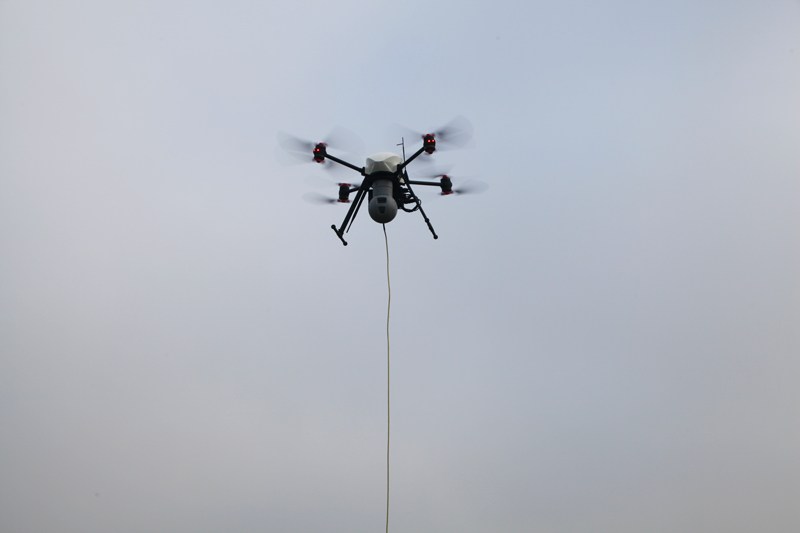 One of the challenges of EMCOMM is we are often deployed at locations where infrastructure may be damaged, and that could include any repeaters in the area. As our simplex efforts have shown, simplex communications is challenging to say the least. Portable repeaters are a potential solution, but in some situations there may not be a high spot to deploy it to, or there may not be power to that area, and it may not even be accessible by vehicle to power it off its alternator.
One of the challenges of EMCOMM is we are often deployed at locations where infrastructure may be damaged, and that could include any repeaters in the area. As our simplex efforts have shown, simplex communications is challenging to say the least. Portable repeaters are a potential solution, but in some situations there may not be a high spot to deploy it to, or there may not be power to that area, and it may not even be accessible by vehicle to power it off its alternator.
People have discussed the use of balloons, but in that case, in addition to the balloon, you need the helium or hydrogen and it presents challenges keeping it properly tethered, not to mention requiring a particularly large balloon to carry a repeater payload or tether an antenna coax from the ground, much less carrying enough power capability to operate the equipment.
Some are proposing that Drone Carried Emergency Repeaters are a possible solution.
Are Drone Carried Emergency Repeaters for amateur radio a thing? As of the date of publication of this article, not that I am aware of. However tethered drone technology exists, and there is a lot of discussion and considerable experimentation going on, and overcoming the challenges of operating one for a sustained period of time is still being worked on and improved.
As you might imagine, one could probably attach a small radio with cross-band repeat capabilities to a larger drone and be able to hover it above treetop level, but only for so long as the batteries on the drone can power it. This would mean restricted periods of communication, and likely require a protocol where stations would know the drone would be flying a specific intervals during the day, communicating through it using those windows. While not the ideal solution, it would provide a way to periodically move traffic, but would be useless for tactical operations, which is what repeaters tend to be primarily used for.
Tethering seems to be where many people are looking for the solution to the power problem. A drone, with a wire tether to provide power, could fly for extended periods of time, and the line could also provide power for the repeater. If Commercial power is available, the drone could fly endlessly. Extended operations could also succeed by powering a drone from a generator or even an automobile's alternator.
Tethering brings its own problems, not the least of which is the weight of the wire being held aloft by the drone. A larger drone could solve that problem, but that means more power must go up the tether, requiring heavier wire, requiring a bigger drone. This is the same problem the space transportation industry has - add more fuel to get more thrust and the rocket has to be bigger and heavier, requiring more fuel.
Luckily, this problem has been partially solved, decades ago, by Nikola Tesla. Most of you know that Thomas Edison was a big proponent of distributing power by Direct Current, while Nikola Tesla believed alternating current at high voltage would be more efficient because the wire could be much smaller and there are less issues with heat due to voltage drop across the wires.
People are experimenting with sending higher voltage AC up the tether and having a simple transformer and rectifier convert the energy into the voltage required to operate the drone and communications payload.
The results look promising. Although I have not found anyone who has one in operation, there are those who have built the necessary hardware and are testing it out on the ground with impressive results.
Imagine, no matter where deployed, having the ability to have extended communications capabilities that you could carry in a backpack! Only time will tell how well this will ultimately work, but I believe this concept can and will come to be.




